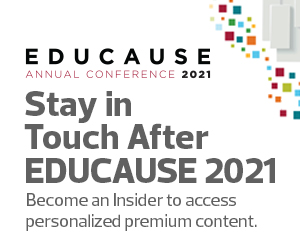Behind Every Digital Equity Initiative Is a Great IT Department
Saran can still remember the date of CCCD’s first online class. It was March 17, 2020, and the weeks leading up to it had been a frenzy.
“Before the beginning of March, we started to work with our vendors to order laptops, Chromebooks and hotspots because that’s something that a lot of students at our community colleges would need,” she said. “So when March 17 hit, we had devices.”
Even though its campuses across Southern California have since reopened, CCCD continues to supply hotspots for students who can’t attend classes in person. IT leaders like Saran are still working behind the scenes to ensure remote students have the bandwidth — and knowledge — to succeed in online courses.
MORE FROM EDUCAUSE 2021: How can colleges begin planning for the ‘birth dearth?'
Kent State also ordered hotspots and computers ahead of time to prepare for remote learning.
The pandemic “showed us just how important it is for learners to have digital access,” Rathje said. To avoid connectivity issues during online learning, Kent State scaled up its learning management systems, video systems and VPNs. The university considered the amount of bandwidth that students, faculty and staff needed to videoconference and stream, and decided to undergo a network overhaul to ensure academic continuity.
Click the banner below to learn more about how Kent State modernized its network.












